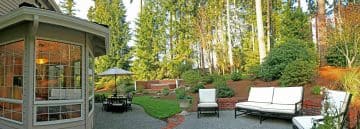RHS Level 2 Exam Question – R2112 from February 2013:
Q.3. a. Name FOUR distinct trees grown for winter interest. (4 marks)
b. Describe the routine pruning carried out on a NAMED shrub to enhance its winter interest. (6 marks)
Sample Answer:
Q.3. a. Name FOUR distinct trees grown for winter interest. (4 marks)
Examiner’s Comments: Candidates named a range of suitable trees which are grown for winter interest. These included; Acer griseum, Betula utilis var. jacquemontii, Prunus x subhirtella ‘Last 2014alis’ and Ilex aquifolium. Full marks were awarded to those candidates who used botanical names.
Additional Ideas: Other options here include: Salix matsudana ‘Tortusa’, Corylus avellana ‘Contorta’, Pinus sylvestris
Trees offering winter interest may: be evergreen, flower in winter, have interesting bark, or have an unusual or attractive structure, Salix matsudana ‘Tortusa’, (shown in image, common names include dragon’s claw willow and corkscrew willow) is a good example here, with attractive twisted branches that are most visible in the winter months
b. Describe the routine pruning carried out on a NAMED shrub to enhance its winter interest. (6 marks)
Sample Answer:
Examiner’s Comments: The majority of candidates described the pruning of Cornus alba ‘Sibirica’. The best candidates described how the plant was pruned by stooling in early spring and included details of; the removal of dead, dying and diseased wood, the position of the cuts in relation to the buds, the height of cut above the ground and the tools used. Some candidates chose to include labelled diagrams (although not asked for) to enhance their descriptions.
Note here that although the question doesn’t ask for diagrams, the examiners recognise that expanding the answer in this way gives extra depth and substance to an answer. In the exam, don’t be afraid to go beyond what is asked for, if you have time, with diagrams or extra information that can both show your full understanding and ensure that you are answering the question fully.
Sample answer: Cornus alba ‘Sibirica’: Hard annual pruning produces the best display of colourful winter stems, but this is at the expense of flowering growth. Just before growth commences in early to mid-spring coppice the shrub by pruning all shoots to wtihin about 5 – 8 cm (2 – 3 in) of ground level, or within two buds of the previous year’s growth. It may be preferable to vary the height to which stems are cut back to avoid a rigid, uniform appearance. Then apply a quick-release fertilizer and mulch liberally, covering a circle of 60cm radius around the shrub.
Pruning is also an effective way of removing dead or damaged shoots. Cut shoots back to an outward facing bud on healthy, undamaged wood. A new shoot will replace the pruned stem. The new shoot will grow in the direction the bud is facing, so cutting to an outward-facing bud will help to create a bushy shrub; while an inward-facing bud will encourage the shoot to grow towards the centre of the shrub. Spring is a good time for this sort of pruning.
When pruning it is important to use the appropriate tool for the task, and to ensure that it is sharp so that it cuts cleanly, easily and safely. Using a blunt blade can leave a plant with a ragged wound that is prone to infection or that can cause dieback. Secateurs ar eused for pruninig woody stems up to about 1cm thick and soft shoots of any thickness. Long-handled loppers or pruners are useful for removing woody stems or branches of 1 – 2.5cm thick, where secateurs might be damaged, and for thinner branches that are difficult to reach.
The RHS recommend allowing the shrub to grow unpruned for the first year after planting, and then in following years, pruning in early spring, before bud break.
Neglected plants can be renovated by cutting out the old wood at the centre of the bush.

